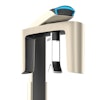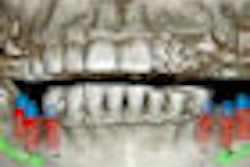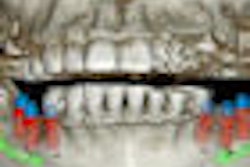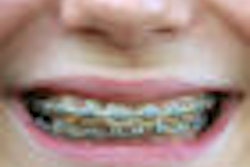The accuracy and reliability of cone-beam CT (CBCT) measurements are not affected by changing the skull orientation of the subject being imaged, according to a new study in the American Journal of Orthodontics and Dentofacial Orthopedics (August 2011, Vol. 140:2, pp. e59-e66).
To determine the accuracy and reliability of measurements obtained from CBCT for different head orientations, researchers from Cairo University attached stainless steel wires to a dry skull at different places and scanned the skull using CBCT in six positions. Intraobserver and interobserver reliability tests were performed by using six landmarks identified on the virtual 3D skulls by two operators.
Two methods were used to determine the accuracy of measurements on the virtual 3D skull scanned in different positions. In the first method, 12 linear distances were compared on the physical skull and the 3D virtual skull in the centered and the other scanning positions. In the second method, registration of each of the five positions on the centered position was done separately, and coordinates of 11 landmarks were identified in each position and compared with the centered position.
The researchers found high intraobserver and interobserver reliability, very high concordance between the physical skull and the CBCT centered-position measurements, very high concordance between measurements of the centered position in relation to those obtained from the different skull positions, and high concordance in the registration of the skulls in the different positions.
"Accuracy and reliability of CBCT measurements are not affected by changing the skull orientation," the study authors wrote. "Thus, the upper-lip and chin rests should not be considered absolute requirements during CBCT imaging if a stable head position is ensured."



















